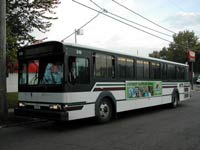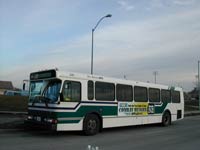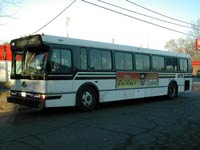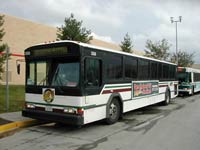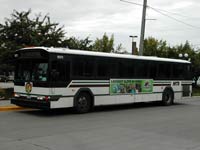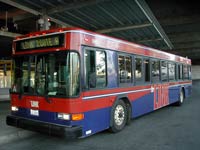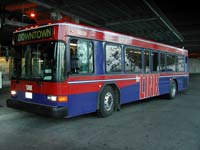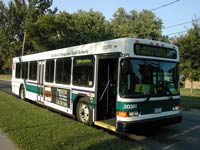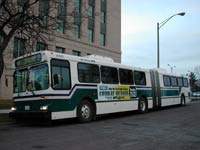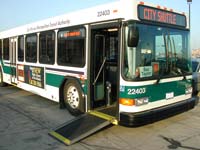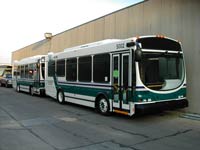The oldest running buses at the DM MTA when I was there were these 1989 Gillig Phantoms. They had Detroit Diesel 6V92 engines and Voith transmissions. These buses were ok except for that they didn't have air seats.
The next oldest buses were these 1992 Orion Vs. They also had Detroit Diesel engines and Voith transmissions. These were pretty nice buses, but still no air seats. They were in the process of being repainted into the newer pain scheme, and they looked very sharp in the new paint (left) in my opinion.
In the flood of 1993, the DM MTA lost a few buses when the facility was completely flooded. These 1994 Gillig Phantoms were the "flood replacements". They had Detroit Diesel engines and Voith transmissions like the others. These were pretty nice buses to drive, and they did have air seats (although not very good ones).
These were the 1997-1998 Gillig Phantoms. They had Detroit Diesel engines and Voith transmissions. Unfortunately, some tinkering had been done to the power system in an attempt to improve efficiency and emissions which resulted in a pitiful lack of power off the line. Driving these buses was pretty scary.
This was one of a handful of "LINK" buses that served a special route downtown. They were 1998 Gillig Low Floors with Detroit Diesel engines and Voith transmissions. They were very slow off the lines as well (electronic controlls), but were reasonably well suited to the route they were on. They were comfortable buses to drive.
This one bus, 9808, was also a 1998 Gillig Floor, but this bus was a demonstrator model bought second hand from the manufacturer. It had a Detroit Diesel engine with an Allison transmission, and unlike all of the other 'standard' MTA buses, this one was only 35 feet long as opposed to the typical 40'. This bus really moved! It didn't have the electronic controls in place that the other LINK buses had.
These were the 2000-2001 Gillig Low Floors. Low Floor buses are the current rage in transit because they allow quicker and easier boarding since they have no stairwells like typical high floor buses. This is especially true for wheelchair passengers and other passengers who have trouble getting up stairs. These buses had Cummins engines and Voith transmissions and had a lot of take off power compared to most other buses. They were very nice to drive.
These were the 2000 New Flyer D60HF buses. At 60 feet, they are longer than all of the other MTA buses. The bus consists of two sections and a flexible joint in the middle. The term for this type of bus is "articulated bus". The 'artics' were nice to drive despite the extra length. They had a decent amount of power, enough to get out on the freeway for the morning and evening commuter routes they served. They had Detroit Diesel Series 50 engines and Allison World B500R transmisisons.
Des Moines received a few brand new buses in the fall of 2002. They were just like the other 2000-2001 Gillig Low Floors and were very nice to drive.
The paratransit department at the DM MTA received these new Chance Coach (recently renamed 'Optima Bus') Opus buses in the fall of 2002 as well. It is based on a British design. Since fixed route and paratransit were kept separate, I never had the opportunity to drive these.
